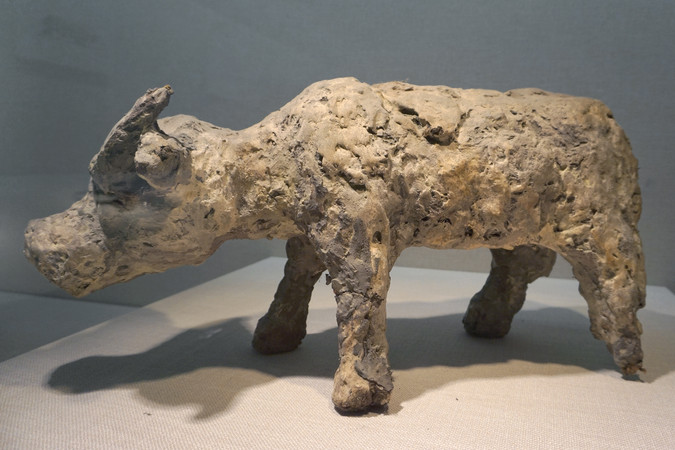NASA drills freaky scenario where elusive asteroid heads towards Earth
What if,关键字1 in 14 years, a newly-discovered asteroid was likely to strike Earth?
But that's not all.This threatening space rock, some 330 to 1,050 feet in diameter (or 100 to 320 meters), has just disappeared behind the sun, making crucial observations impossible for the next seven months.
To prepare for such an unsettling scenario, NASA just completed an exercise to "inform and assess our ability as a nation to respond effectively to the threat of a potentially hazardous asteroid or comet." A possible asteroid or comet collision can pose a number of uncertainties, which the space agency continued to test during the recent fifth Planetary Defense Interagency Tabletop Exercise.
You May Also Like
"A large asteroid impact is potentially the only natural disaster humanity has the technology to predict years in advance and take action to prevent," Lindley Johnson, NASA's planetary defense officer emeritus, said in a statement.
SEE ALSO: NASA scientist viewed first Voyager images. What he saw gave him chills.Importantly, there are no known asteroids on a collision course with Earth for at least 100 years, and the chances of a major impact in our lifetimes is extremely small, astronomers say. Planetary defense agencies have never needed to raise an alarm about a threatening impact — though you've undoubtedly seen sensationalized news about menacing asteroids over the years.
"We have never actually issued a warning," Johnson previously told Mashable. (But they have informed the public about what some asteroids of interest are doing.)
"We have never actually issued a warning."
But, at some point, an impact is inevitable. "Yes, asteroids have hit Earth over the course of its history, and it will happen again," NASA notes.
In the latest asteroid collision scenario, the space agency presented a hypothetical object some 330 to 1,050 feet across that has a 72 percent chance of walloping Earth. Something in that range, while not nearly the biggest class of asteroid, could be hugely destructive. Take the 600-foot-deep "Meteor Crater," which landed in present-day Arizona 50,000 years ago. The culprit was likely some 100 to 170 feet across, but created a blast big enough to destroy Kansas City.
As the hypothetical trajectory below shows, this asteroid passes over some densely populated areas like Dallas, which would almost certainly create a national emergency, even if the exact trajectory is uncertain. The scenario's impact is expected in 14 years, in July 2038, giving countries a relatively short time to prepare — especially with a seven month gap in surveillance. From initial observations, the object's size, composition, and trajectory are uncertain.
"To complicate this year’s hypothetical scenario, essential follow-up observations would have to be delayed for at least seven months — a critical loss of time — as the asteroid passed behind the Sun as seen from Earth’s vantage point in space," the space agency said.
 A hypothetical asteroid impact scenario created for the Planetary Defense Interagency Tabletop Exercise. Credit: NASA
A hypothetical asteroid impact scenario created for the Planetary Defense Interagency Tabletop Exercise. Credit: NASA  A slide from the Planetary Defense Interagency Tabletop Exercise showing courses of action for contending with a likely impact. Credit: Planetary Defense Interagency Tabletop Exercise
A slide from the Planetary Defense Interagency Tabletop Exercise showing courses of action for contending with a likely impact. Credit: Planetary Defense Interagency Tabletop Exercise This latest planetary defense exercise underscores how critical near-Earth object surveillance is (these are objects that come within some 30 million miles of Earth's orbit around the sun). Fourteen years is a rushed timeline.
"You need to know what's coming, when it's coming, and how hard it's going to hit," Eric Christensen, the director of the NEO-seeking Catalina Sky Survey in Arizona, previously told Mashable.
Related Stories
- NASA spacecraft spots dead robot on Mars surface
- Astronomers just witnessed a whole galaxy 'turn on the lights' in real-time
- The best telescopes for gazing at stars and solar eclipses in 2024
- The mega-comet hurtling through our solar system is 85, yes 85, miles wide
- The first images of Earth are chilling
"You need to know what's coming, when it's coming, and how hard it's going to hit."
Among the courses of action discussed by NASA, FEMA, and other partners included a flyby of the incoming object, which would vastly improve our grasp of its composition, rotation, speed, and beyond. Will it break apart into smaller pieces in Earth's atmosphere? Is it rubble-like, or solid? How likely is it to hit the ocean? Also discussed was the major operation, a "Purpose-Built Rendezvous," which implies using a spacecraft to deflect an object.
Asteroid deflection is a realistic future possibility. In 2022, NASA plunged a refrigerator-sized spacecraft into a stadium-sized asteroid, with hopes of simply nudgingit. It was an unprecedented, successful test — proving humanity could alter the path of a menacing asteroid, should one ever be headed our way. The impact cut the asteroid Dimorphos' loop around its parent asteroid (they journey around the sun as a pair, or binary system) by a whopping 33 minutes and 15 seconds — when the original goal was to change it by at least 73 seconds.
 Participants at the fifth Planetary Defense Interagency Tabletop Exercise. Credit: NASA / JHU-APL / Ed Whitman
Participants at the fifth Planetary Defense Interagency Tabletop Exercise. Credit: NASA / JHU-APL / Ed Whitman Ultimately, this latest tabletop impact exercise resulted in a number of "High-level Takeaways." A glaring problem is the uncertainties involved in planning for a likely impact. The participants recommended developing "the capability to rapidly launch an NEO [near-Earth object] reconnaissance mission," which could include repurposing existing spacecraft.
Thankfully, NASA and its planetary defense partners will continue exercising hypothetical asteroid threats. It behooves us to be prepared, even if the overall risk is low.
The risks of an asteroid impact
Here are today's general risks from asteroids or comets both tiny, and very large. (Importantly, even relatively small rocks are still threatening, as the surprise 56-foot (17-meter) rock that exploded over Russia and blew out people's windows in 2013, proved.
Every single day about 100 tons of dust and sand-sized particles fall through Earth's atmosphere and promptly burn up.
Every year, on average, an "automobile-sized asteroid" plummets through our sky and explodes, explains NASA.
Impacts by objects around 460 feet in diameter occur every 10,000 to 20,000 years.
A "dinosaur-killing" impact from a rock perhaps a half-mile across or larger happens on 100-million-year timescales.
(责任编辑:雨季不再来)
- ·黑色信标辅助角色古痕选择推荐
- ·豆瓣小说9.5分以上的书 2025最受欢迎的书籍推荐
- ·项目经理年度考核个人工作总结
- ·Introducing Call of Duty: Mobile Season 4 — Infinity Realm
- ·Revisiting the GeForce GTX 680: GTX 1050 Ti
- ·新房装修需要注意哪些 新房装修步骤有哪些
- ·吃辣条患罕见病暴瘦20斤 11岁女孩因为辣条透支生命
- ·时代的眼泪?Xbox放弃销售实体光盘引争议
- ·王钰栋:感谢韦世豪让出10号给我 罚点球前伊万问过自己
- ·Best robot vacuum deal: Eufy Omni C20 robot vacuum and mop at record
- ·Sinner vs. Rublev 2025 livestream: Watch French Open for free
- ·这些有创意的国外垃圾桶设计 净化周边地面环境
- ·今年季后赛,无脑选黄色?
- ·世预赛激战!专家辉红论球豪取17连红领衔预测
- ·2021北京上林马术中央公园“上林”UP联赛第二站在秋雨中拉开战幕
- ·用纸折垃圾桶手工怎么折,学手工制作折纸垃圾桶
- ·Wordle today: The answer and hints for June 10, 2025
- ·疾光电影:法师PK中的秘密武器
- ·รวงข้าวเผยเงินบาทต้นสัปดาห์ อ่อนค่าลงเล็กน้อยตามแรงขายพันธบัตรไทย
- ·100平米全包装修价格 全包装修事项














